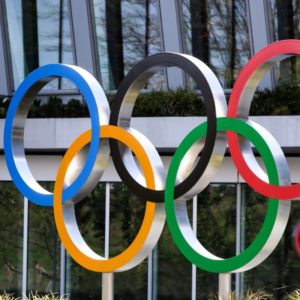Editor's note: Although this summer's Tokyo Olympics have been postponed due to COVID-19, there is a possibility they will be rescheduled to next summer. With Tokyo's extreme summer heat and humidity, dangers to health would remain. The following information holds true for August in Tokyo, including August 2021.
This summer’s Tokyo Olympics are expected to be one of the hottest Olympic Games on record. According to Jennifer Vanos, an assistant professor in Arizona State University’s School of Sustainability, long-term climatology tells us that the question is not if it will be hot and humid in Tokyo, but rather how much hotter than normal it could be. In an effort to obtain more precision on these marginal differences and how the extreme heat will impact athletes, spectators and volunteers, Vanos and an interdisciplinary group of global researchers just published a paper in the journal Temperature.
Focusing primarily on August, as it will be the main competition month, the researchers explored the connection between 35 years (1981-2016) of “past weather patterns indicative of the most extreme heat in Tokyo” and the region’s historical wet bulb globe temperature (WBGT) extremes. (The WBGT is an approximation of heat stress in direct sunlight.) In addition, they also sought to identify “local intra-urban air temperature levels impacting specific venues in relation to duration and time of event.”
“The timing, duration, and intensity of outdoor events will be an important factor in heat illness,” said Vanos, who is also a senior sustainability scientist in the Julie Ann Wrigley Global Institute of Sustainability. “Long, very intense events held midday (such as road cycling) will be at a higher risk than events held in the evening or morning, or low intensity events.”
Based on their analysis using planetary-to-regional scale data, the researchers were able to determine a maximum variation in daytime average August WBGT of 3.95°C from higher to lowest quartile dependent on large scale dynamics.” Vanos explained that the figure 3.95°C was significant because it “could represent the difference between extra cooling or hydration breaks during events, canceling or moving competition and represents a considerably higher or lower risk for exertional heat illness in athletes.” In lieu of their findings, the researchers then recommend that organizers focus on ensuring lead-time heat preparedness to lessen the risk of exertional heat illness, particularly for those competing midday.
In regards to the outdoor events (which make up 43% of the Games), the authors recommended moving the media mix for journalists to an indoor, air-conditioned facility; conducting on-site monitoring for appropriate decision-making; increasing the amount of drinking water and ice available; offering free fans and hats for spectators in unshaded areas; and ensuring adequate airflow to enhance evaporative cooling.
More detailed explanations can be found in the full paper, “A multi-scalar climatological analysis in preparation for extreme heat at the Tokyo 2020 Olympic and Paralympic Games.”
